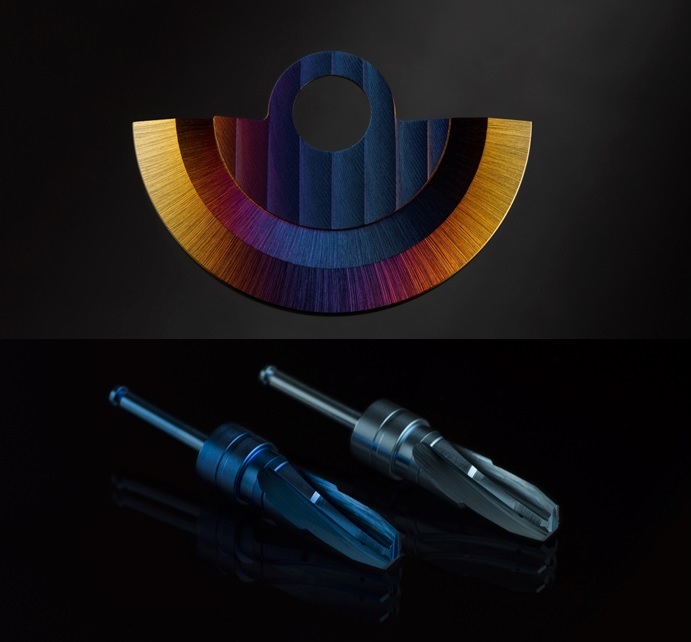by Benoit Dubuis, Inartis Foundation
“The main objective of the Watch Medtech Challenge is to open up new commercial opportunities for our exhibitors and to support them as they diversify,” says EPHJ Director Alexandre Catton. To that end, for the last three years it has relied on support from the Inartis Foundation, which in turn operates Health Valley. This support has already benefited dozens of projects, including the nine finalists from the two previous challenges.
If we were to sum up the previous challenges in two concepts capable of convincing us to continue this support for the third challenge that will take place at the EPHJ Show in September 2021, it is the need for this kind of platform and the impact it has on the companies supported.
Need
The world is changing; that’s a truism. Taking advantage of the new opportunities emerging from these changes is an essential entrepreneurial attitude to adopt. The 18-month digression caused by COVID-19 has highlighted the importance of serving different markets. While watchmaking (considered a non-essential good) was struggling, the medtech sector was expected to provide rapid and effective solutions that would not only make up for the lack of medical devices, but would also develop and produce new ones. The know-how was there, the production capacity was available, many people and companies were interested, but you cannot simply turn into a respirator manufacturer overnight, to take just one example. These two industries and markets were already moving closer together before COVID-19; statistics show that a growing number of watchmaking subcontractors have redeployed their expertise by diversifying into the medtech sector. In fact, at the 2017 Show, nearly one third of exhibitors said they were active in the medtech sector, a proportion which has been on the rise ever since. However, the medtech sector is so specific and ever-changing that it present barriers to entry that few would dare to face on their own. This is what inspired the launch of the Watch Medtech Challenge, the main purpose of which is to develop and support new interdisciplinary projects based on collective intelligence: “Ideas must be transformed into reality”, explains EPHJ Director Alexandre Catton. “Our exhibitors may want to diversify, but what they need most are the means and support to do so. The Challenge will meet this need. ”
How? By calling for projects to reorient technologies, products and ideas towards the medtech industry, the aim is to accelerate the implementation and commercialisation of new products and services. The EPHJ Show would like to enable interested companies to branch out under the best possible conditions, advised by experts who can help them in their efforts and provide them with financial assistance. With appropriate help and support, entrepreneurs will gain access to the keys enabling them to conquer new markets and expand their service offering and product range.
While the 2021 Show has not yet officially launched, requests are already pouring in and for good reason: the upheaval created in the Swiss biomedical sector on 26 May with the entry into force of the new EU Medical Device Regulation (MDR). For the Swiss medical technology industry, this means:
- Exports: Swiss manufacturers must meet third-state requirements to be allowed to export MDR products to the EU.
- Imports: Swiss importers must meet the requirements of the planned Swiss Medical Device Ordinance (ODim) in order to be authorised to import MDR products into Switzerland.
In March 2021, the European Commission announced that the transitional period (grace period) until 2024 would apply to private-label products from Swiss manufacturers under certain conditions. However, negotiations concerning a transitional solution for private-label products between Switzerland and the EU are still ongoing, with no agreement reached yet.
While these regulatory issues were not the main reason for launching the Challenge, which focuses on the innovation and qualification aspects of products, we cannot ignore this worrying context, which is likely to challenge diversification into the medical industry that would be made more complicated by international agreements limiting the movement of goods. We will of course listen to and address these issues.

Positive Coating, 2019 Watch Medtech Challenge winner in 2019
Impact
The impact of this Challenge went beyond our initial vision. While we planned to focus on consulting, the networking aspect took on an interesting dimension. After all, what better incentive to embark on diversification than creating visibility on an initial market. Having approached hundreds of exhibitors, we were able to establish qualified links between ‘supplier’ and ‘customer’. And these initial contacts made it possible to establish supply and co-development partnerships. For example, Coat-X SA, a company specialising in high-performance coatings, went on to sign a very important agreement with Wyss Center in Geneva to develop ultra-thin coatings for use in active medical implants.
Taking advantage of this unique gateway
The next Challenge will take place during the 2021 EPHJ Show (14-17 September 2021 at Palexpo Geneva), but you can now apply by submitting your ideas via the platform.
